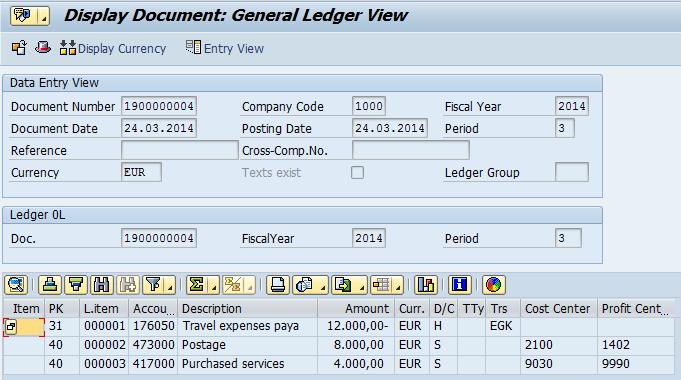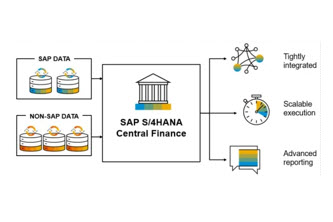3 Steps to Adding SAP GUI Scripting to Your Developer Skill Stack
by Michael Management
 Systems Analysis Program Development (SAP) is one of the world’s most recognized creators of business support software in the world. Created for versatility, customization, and the digital power to help businesses grow, SAP is a robust software environment that requires the skills and hard work of many in order for a company to make the most of it.
Systems Analysis Program Development (SAP) is one of the world’s most recognized creators of business support software in the world. Created for versatility, customization, and the digital power to help businesses grow, SAP is a robust software environment that requires the skills and hard work of many in order for a company to make the most of it.
As a result, it should be no surprise that it entails its own graphical user interface (GUI) scripting to allow for the utmost in customization.
GUI scripting is an often-overlooked area of developer skill stacks because it entails design elements, as opposed to raw programming. These design elements take the user experience into consideration — the “users” being your own coworkers in this case — in addition to robust functionality and flawless execution.
Similar to the art of frontend development, SAP GUI scripting empowers you with the ability to ensure your coworkers can do their jobs quickly, efficiently, simply, and effectively. In other words, you get to be the person who helps the rest of the company thrive.
This makes GUI scripting an essential part of any SAP software environment. If a company is going to have backend functionality that powers its many departments and employees, then that functionality needs a user-friendly way to work.
Naturally, that makes SAP GUI scripting an in-demand and rewarding skill set today. If you’re a developer looking to expand your skills and improve your expertise, then this is the place for you to start.
You can begin your journey to add SAP GUI scripting to your skillset with these three steps.
1. Start with SAP Basics
The basics of SAP are relatively straightforward for almost every specialization. This would require degree of simply being the software in the first place. However, for GUI scripting, the basics look a little bit different.
SAP GUI scripting is one of the only specializations that requires intermediate (or even advanced) knowledge of other software, specifically Microsoft Excel.
Knowing how to change settings and structure data in Excel will be an enormous boon to your future in development. Excel — and the mastery of spreadsheet functionality — plays an integral role in your ability to function as in this field. So while the required skills for this specialization may look different than most of the others, it’s for good reason.
You simply can’t start working with SAP GUI scripting without a thorough knowledge of Microsoft Excel.
2. Learn How SAP GUI Scripting Functions
After you have Excel down pat, it’s time to start learning SAP GUI scripting in the software itself.
This part of your learning experience includes topics like legacy transfer migration (LTMC), shorthand tricks to help make your work easier, exporting structured data, and more.
All of this is essential to the ongoing learning and day-to-day execution of the tasks that you’ll fulfill. Still, the software is so straightforward and easy-to-use that you’ll most likely spend more time learning the essential Microsoft Excel skills and how to use them in SAP than learning about the GUI scripting functionality itself.
This is because the creators of SAP made the astute observation that Excel is one of the most powerful (and perhaps underrated) development tools on the market right now. When it comes to data, organizing it, and using it to execute on different functions, their team created a way to allow Excel to “do its thing,” but within SAP’s environment.
The results are the counter-intuitive learning recommendations that you see in this blog. SAP GUI scripting is the backbone of the user interface experience for users.
But the real engine is Microsoft Excel.
The ultimate trick to becoming a robust and skilled SAP GUI scripting expert is to master Microsoft Excel first.
3. Continue Learning SAP
Once you’ve achieved the results you want in terms of Microsoft Excel and SAP GUI scripting itself, it’s smart to continue on the path you’ve set for yourself though addional SAP Training.
This allows you to expand your general SAP knowledge so that you can continue to make yourself an impressive and reliable part of your company’s day-to-day functionality. It’ll make you a more marketable employee, and it can also help make your position more lucrative over time.
For SAP GUI scripting, it’s often recommended to continue learning about the different programming and development opportunities that the platform offers. This allows you to learn more about SAP within your area of expertise, as opposed to going outside of that expertise to start somewhere else from square one.
Reporting, batching, automation, customization, queries, and more are all at your fingertips when you want to improve your abilities from a development perspective.
Learning these skills may not necessarily improve your work in GUI scripting, but they can help you get a more comprehensive and thorough understanding of what SAP offers. This unique perspective entails understanding both the frontend and backend of SAP programming, giving you a powerful position as a full-stack SAP developer who can tackle (or oversee) complex tasks.
Jumping into this additional education gives you the ability to complete initiatives on your own that would otherwise take a multi-person team. And if you can master all of the development opportunities that SAP has to offer, then you can truly call yourself “full-stack.”
Start Learning GUI Scripting for SAP
Are you ready to learn GUI scripting for SAP?
We have the perfect curriculum for you!
Click the link below to start on your way to coming an SAP GUI expert. We’ll cover all of the steps above and then a little bit more so that you can learn as much as possible before working on with it in a real-life career environment.
Is it time for you to take your next step in your career as a developer?
Click here to start your journey today!
by Michael Management
More Blogs by Michael Management

Unlock Financial Precision: The Critical Role of...
Mastering Document Splitting in SAP Central Finance: Essential Ins...

Unlocking Success: The Strategic Imperative of Group...
Why is Group Reporting Critical for SAP Central Finance? Masterin...

Kickstart Your Career: Mastering SAP Inventory...
SAP inventory management is an in-demand skill set from large companie...
Related Blogs

4 Steps to Become an ABAP Programmer
Programming, coding, and development are all three words that refer to...

12 Tips to Help You Manage Your Time so it Doesn't...
Are you managing your own time or is it managing you? The world today ...

How to Get Certified as a SAP Workflow Administrator
At enterprise-level businesses, there’s always a lot of...
.png)

